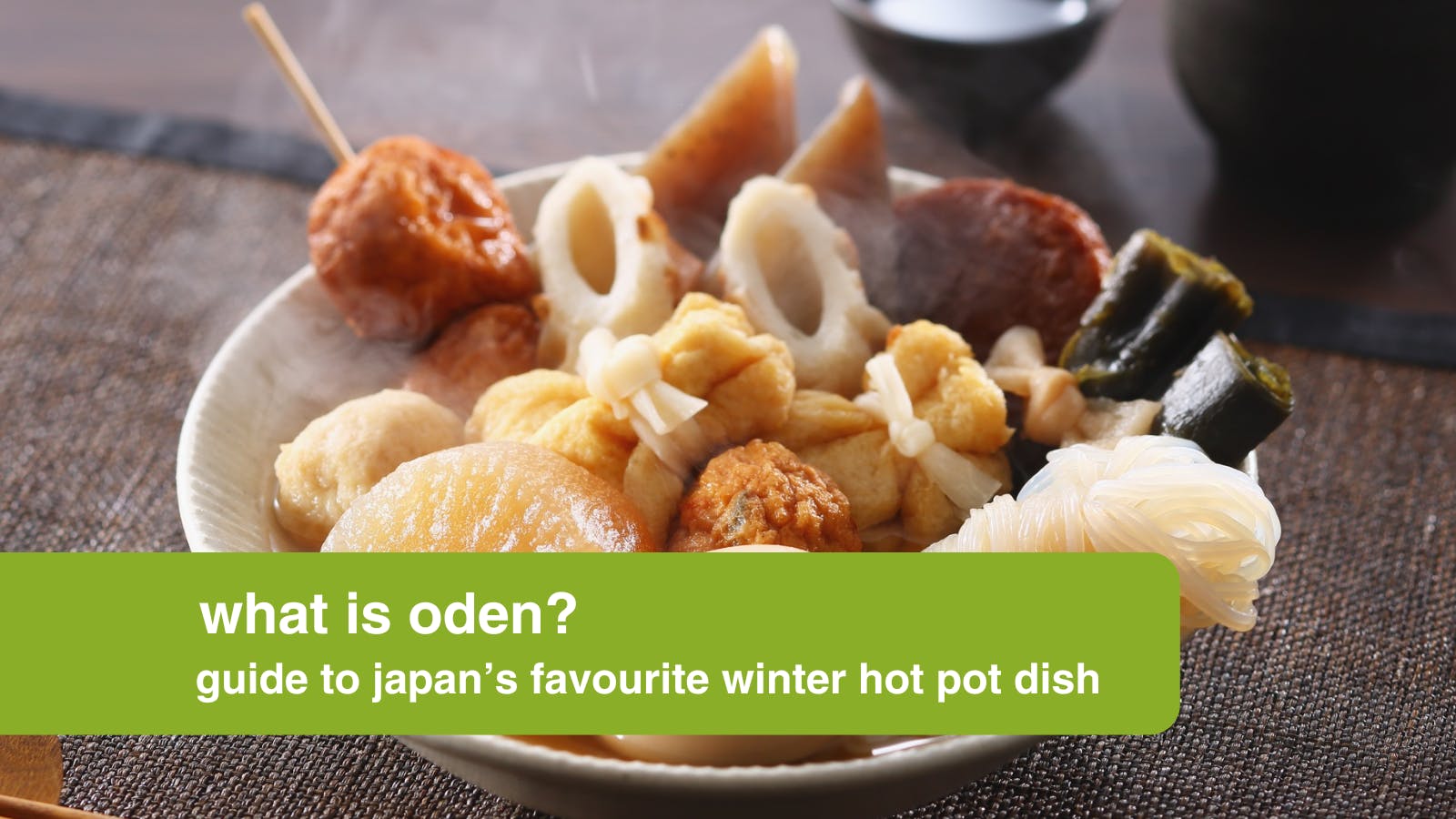your cart
Your cart is empty.
General Articles
What is Oden? Japan's Favourite Winter Hot Pot
Enjoy oden this winter, a classic Japanese winter one-pot dish made with rich umami dashi soup, assorted fish cakes, daikon rashi & more!

For many of us, the transition into winter heralds a change in eating habits as we swap salads and the last of the summer fare for heartier foods that inspire warmth and comfort.
In Japan, oden is one such classic wintertime dish that’s perfect for enjoying as the weather starts getting colder and you need a warming pick-me-up!
What is Japanese Oden?
Oden is a one-pot stew or hot pot-style dish traditionally enjoyed during winter and the colder months. Also known as fish cake stew, it typically features a variety of fish cakes alongside a range of other wholesome ingredients such as tofu, daikon radish, konnyaku and boiled eggs, all cooked and served in a dashi broth.
In Japan, it’s common to see oden sold in supermarkets, convenience stores and street food stalls when winter arrives..
Each bite of oden offers a riot of flavours and textures, coming together to create the ultimate comfort dish that feeds both the stomach and the soul!

Typical Oden Ingredients
As a stew-style dish, there’s a lot of scope for customisation and experimentation when making oden – you can add your favourite toppings as you see fit. However, there are a few basic ingredients that make up a classic oden.
Dashi broth – an umami soup stock often made with kombu and katsuobushi. This rich, umami flavour serves as the foundation of the dish.
Nerimono – an umbrella term for Japanese fish cakes and balls made from ground fish. Popular variations to include in oden are kamaboko, chikuwa, hanpen, satsuma-age and kamaboko. In Asian supermarkets, you can often find selection packs of different fish cakes that are great for oden.
Daikon – a kind of Japanese radish that is usually served in thick slices, absorbing the flavours of the broth and adding a slight sweetness to the dish.
Konnyaku – a firm jelly made from the konjac plant that is ideal for adding a chewy texture to stews, soups and hot pots.
Atsuage – deep-fried tofu pockets that absorb the complex flavours of the soup stock and add a nice texture to the dish.
Boiled eggs – hard-boiled eggs are popular additions as they’re simple yet filling, adding to the comfort of the dish.

Regional Oden Varieties
While these are the basic essentials included in most oden dishes, the exact recipes can vary quite a bit by region, with various broths, seasonings and toppings being unique to particular prefectures. Examples of a few variations include:
Tokyo-style oden – traditional oden made with strong soy sauce, relying heavily on fish cake ingredients.
Kyoto-style oden – made with tofu skin, shrimp potato, all lightly seasoned.
Osaka-style oden – meat toppings like beef tendon and octopus are standard.
Nagasaki-style oden – characterised by rich and sweet flavours from a variety of fish paste ingredients like kamaboko and chikuwa skewers.
Okinawa-style oden – includes pig trotters, sausages and green vegetables.
Sendai-style oden – often makes use of bamboo shoots and shima dumplings with grilled sardines added to the dashi stock.
This is just a small snapshot of how oden can vary region by region. Other ingredients added across different Japanese prefectures include things like potatoes, whelks, cod roe, scallops, shiitake mushrooms, narutomaki, pork offal, grilled tofu, mochi, local vegetables and loads more.

How to Make Oden at Home
Oden is such a popular dish in part because of its simplicity. When it comes down to it, all you really need to do is gather up your chosen ingredients in a large pot and simmer them in your broth.
For an authentic oden, you can also use a donabe, which is a Japanese heat-retaining clay pot that’s great for communal meals where you all gather around a central pot.
- Prepare all your ingredients, including slicing and boiling the daikon for around 20 minutes, blanching the konnyaku for a few minutes and boiling any eggs.
- Make the broth, which is the foundation of a good oden. Combine dashi with light soy sauce and a splash of mirin and sake (or other sauces and seasonings, depending on your chosen regional variation).
- Add the daikon, konnyaku and peeled boiled eggs to the simmering broth and cook for 20 minutes.
- Cut or skewer your fish cakes and other ingredients as required before adding them to the broth and simmering for a further 10 minutes.
- Once you’re happy with your oden combination, it’s ready to serve! Oden is also commonly served with a hot mustard as a dipping sauce.
Want to enjoy your own version of oden this winter? Check out our selection of authentic oden ingredients, including tasty fish cakes, tofu, konjac and more.
this site uses cookies
We and our advertising partners use cookies on this site and around the web to improve your website experience and provide you with personalised advertising from this site and other advertisers. By clicking allow, you accept the placement and use of these cookies for these purposes. Learn More




